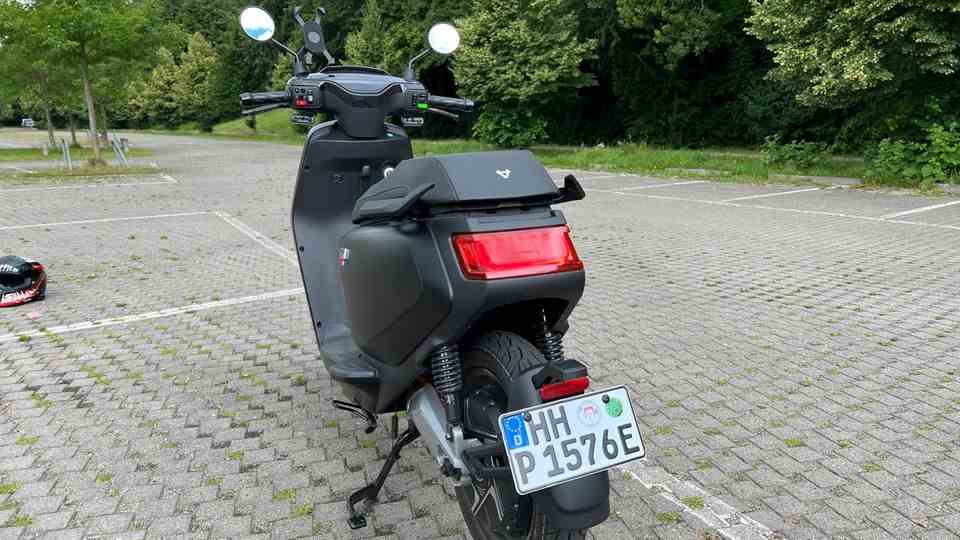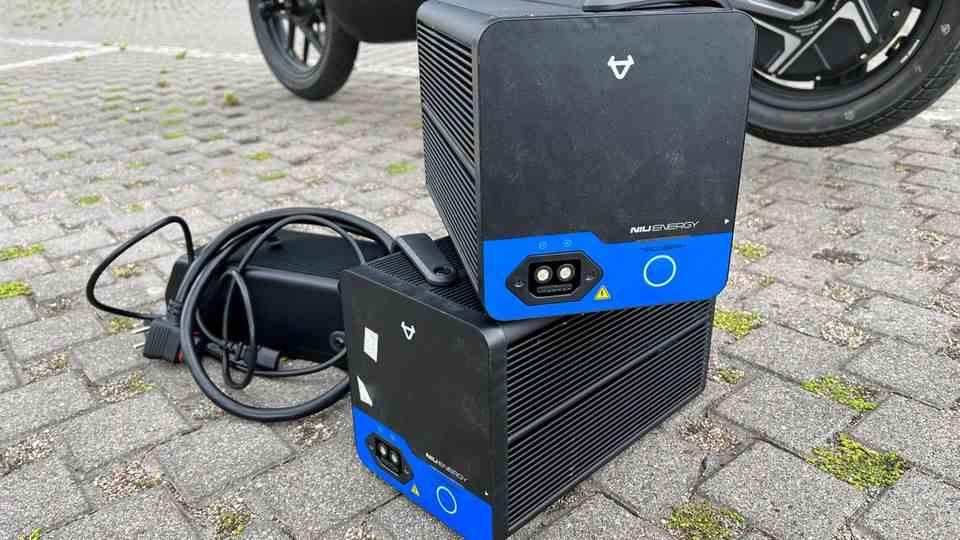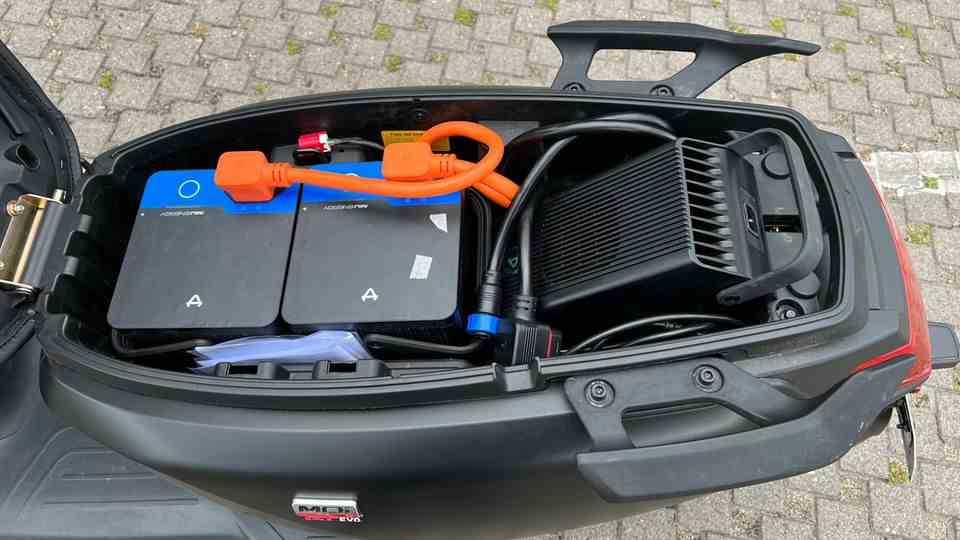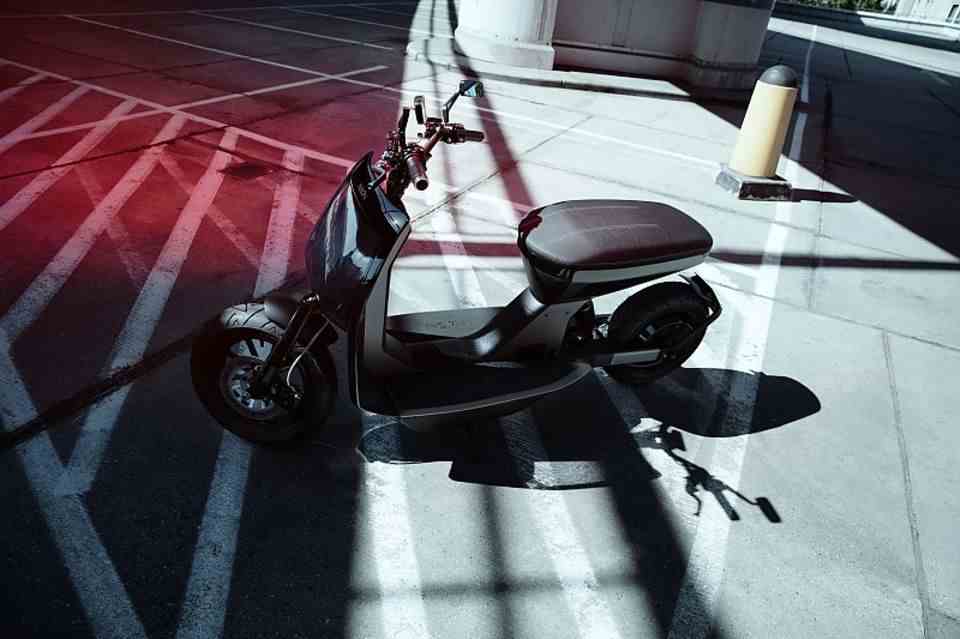Electric scooters are all the rage – but almost nobody wants to be on the road at 45 km/h anymore. The first models manage the full 100 km/h – like the Niu MQI GT Evo. This definitely has advantages and disadvantages.
A scooter is arguably one of the best ways to get around the city, right after a subway stop right on your doorstep. The advantages are obvious: Inexpensive to buy, plenty of storage space for shopping or the helmet and super low consumption. However, the Niu MQI GT Evo offers none of that. Nevertheless, there are reasons to take a closer look at the electric scooter.
Because the Niu MQI GT Evo masters a very rare discipline among electric scooters – it drives (according to the speedometer) 109 kilometers per hour. This is the perfect performance range for journeys through the city, on the city motorway and through the countryside.
Driving the Niu MQI GT Evo is a pleasure
Before driving, a quick look at the speedometer. If the scooter is not parked in direct sunlight, the digital display shows the following information: driving mode, battery charge level, current speed and details of the last or current trip, such as the distance covered. A push of a button on “Ready” wakes up the Niu MQI GT Evo and you’re ready to go.

Whoever thought it would be a great idea to put a curved glass over the display was wrong. The speedometer is difficult to read in direct light.
© star / Christian Hensen
Incidentally, it is enough to have the key for the scooter in your pocket – the ignition lock is only used to open the seat. Actually, everything happens via three buttons on the radio transmitter. That’s right: even the steering wheel lock engages automatically as soon as you move away from the scooter. That’s even more convenience than many keyless motorcycles offer, you don’t need the glowing lock.
Before and while driving, you can move the Niu MQI GT Evo in three modes: “E-Save”, “Dynamic” and “Sport”. These modes determine both the acceleration of the scooter and its top speed. “E-Save” corresponds to a 50 scooter and limits travel to 50 kilometers per hour, “Dynamic” raises the limit to 80 km/h and “Sport” lets the Niu MQI GT Evo fly – to said 109 km/h according to the speedometer. A twist of the accelerator handle makes you happy – in “Sport” mode, of course. The speed can be finely dosed, with sufficient self-control, constant 30, 50 or 70 km/h are no problem. If necessary, a cruise control will help.
If you are on the right roads and can let the Niu MQI GT Evo off the leash, it is a pleasure to see how well the electric scooter swims in traffic. Scooter riders of smaller calibers will know it: Without enough steam, you quickly become an obstacle and even forty-ton vehicles show no mercy when it comes to overtaking maneuvers. That doesn’t happen with this bullet.
High level of comfort until the end of the journey
The ride is also comfortable, in many respects. The indicator stops automatically when the lean angle is sufficient, the seat is not too hard, not too soft. All instruments are easily accessible, only the display, as already mentioned, can be safely forgotten in the sunlight. At best, the speed is readable, the rest is blurred. Although the mirrors allow a good view to the rear, they always put the driver’s shoulders in the limelight. A little more distance from the middle of the handlebars wouldn’t have hurt.

The seat for the passenger is slightly higher and offers two solid handles. Overall, the Niu MQI GT Evo is a very comfortable vehicle.
© star / Christian Hensen
The big 14 inch tires make it easy to maneuver the scooter through the streets and the brakes are à la bonne heure. The suspension, you gotta like it, is a little tight. If the road isn’t good, the ride isn’t either – bumps are always noticeable regardless of the tire pressure (2 bar in the test). Niu drivers recommend a quick tire change, apparently it is also due to the standard tires.
In everyday life, some shortcomings are noticeable
The Niu MQI GT Evo’s real flaws start where the ride ends. Either because you have arrived or because the batteries are running out of juice. In the latter case, unfortunately, a real weakness of the scooter becomes apparent. Powered by two rechargeable batteries, each with 26 ampere hours and a voltage of 72 volts, the Niu MQI GT Evo quickly reaches top speed, but unfortunately it also quickly becomes empty.
In good weather and continuously active sport mode with longer passages at top speed, the scooter managed almost 50 kilometers before it went into emergency operation with 15 percent remaining capacity. This starts when the remaining range is low and limits the bullet to a yawning slow 50 kilometers per hour, whereby the last five percent feel extra tough. Automatic recuperation, i.e. energy recovery through braking force, doesn’t really help either. Much more than 60 kilometers are simply not possible with the scooter if you frequently call on the entire performance. And they drove faster than you would like.
Charging is also one of those things that just isn’t solved perfectly. It takes around five hours to charge the batteries, i.e. 2.5 hours per battery. But: Only in the scooter itself can both batteries be supplied with power at the same time if you connect the power pack to the central connection. This requires a socket a few meters away. Public charging stations are actually out of the question, because the scooter cannot be charged with the seat closed, which would probably be a problem if left unattended.
Weight training thanks to electric scooters
If you don’t have a socket close to the scooter, you have to heave out both 14-kilo blocks and carry them away. Not an easy task. But it gets really annoying at the socket. Because: The power pack itself only has one cable for one battery. Translated: charge one battery, back to charger, connect second battery, wait again. This is incredibly impractical – especially since there is a great danger that you will miss the change and only refresh one battery. Incidentally, this means that the scooter only runs in “E-Save” mods. Driving on a battery is possible, but pointless.

The Niu MQI GT Evo runs on two 26 amp hour batteries. Each battery weighs 14 kilograms, the handle bends noticeably during transport. Good for those who can reach a ground-level socket.
© star / Christian Hensen
So far, you won’t find a Y-cable in relevant shops, a second power supply unit is not a solution – it costs 700 euros. The purchase of additional batteries would be just as nonsensical. Firstly, there are no offers yet, secondly, the price for a battery from the predecessor Niu MQI GT is 1400 euros.
No space in the hut
But suppose the goal is reached with enough residual power. Even then, the comparison with conventional scooters shows weaknesses on the part of the Niu MQI GT Evo. Because of the huge batteries and the charger, there is absolutely not an inch of space under the seat. Without a top case, which costs around 200 euros with a carrier plate, there is neither room for the helmet nor for luggage. A small hook between the legs makes it easier to transport shopping bags or backpacks.
Speaking of residual power: Anyone who leaves the Niu MQI GT Evo for too long should not be surprised if the battery level is significantly lower after a few days than it was when it was parked. This is mainly due to the GPS system and the app connection, which also make the scooter accessible from afar, but cost energy. If you park the Niu for a longer period of time, you should disconnect the cables from the two batteries under the seat.

The biggest advantage of a scooter – the usually generous helmet compartment – does not exist with the Niu MQI GT Evo. If you transport batteries and charger, there is not even enough space for a bottle of water.
© star / Christian Hensen
Niu MQI GT Evo: The test result
Which brings us to the conclusion: The Niu MQI GT Evo is an incredibly fast and agile scooter for the city and near the periphery, best for people with a garage that also offers a socket. And for trips without a lot of luggage and a possibility to take off the helmet at the destination. Or with a top case.
In almost all other aspects, the electric scooter has to admit defeat to a comparable 125 Vespa or significantly cheaper scooters – even if the electricity price for 100 kilometers is around two thirds below the equivalent at the pump. Because the purchase price of around 5000 euros is a real announcement – and the scooter has to face up to this comparison.
The lack of storage space and the lugging of the batteries were particularly annoying in the test. Since the scooter has to be charged every day due to its range on many commuting routes, the latter is particularly important. The Niu MQI GT Evo is only a really good everyday companion that is worth the money if the living conditions and driver profile allow it.



